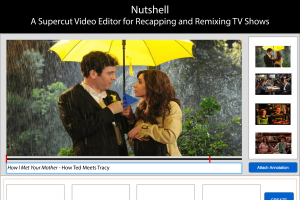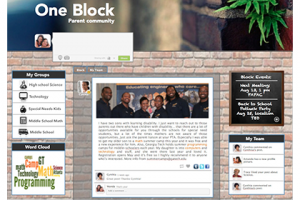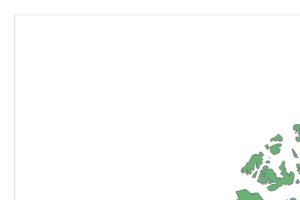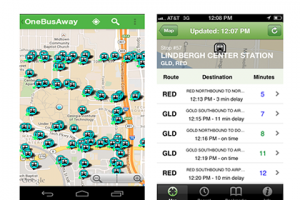|
A series of demonstrations of novel interactions with wearable devices, from smartwatches to head-mounted displays. |
Nutshell is a video editing tool that allows users to isolate clips from their favorite TV shows and create "supercuts" that summarize complex plot arcs and compile recurring inside jokes.  |
This study examines different aspects of media sharing within Mobile Vaani - an Android app that displays crowdsourced news recordings from rural communities in many states in India. We have developed a feature that facilitates offline sharing of these new recordings, in light of the relatively high cost of mobile data in the areas where Mobile Vaani is most used. |
|
|
Parents have an important role in improving their children's educational experience by providing them with learning opportunities Free online informal learning resources are available more than ever; however, research shows that people who may need these resources the most are not able to find them. In this study, we go beyond a binary definition of access to examine technology practices and level of access to information technologies among African-American parents in financially depressed communities in Westside Atlanta.  |
We investigate how users perceive socioeconomic disparities in the United States before and after visualizing and interacting with a standalone county-level US choropleth map and a choropleth map of the US that is `linked' to a map of the world. We measure socioeconomic properties using indicators related to education attainment, income inequality, life expectancy, incarceration, obesity and prevalence of HIV. We test whether perceive inequality across the US differently if they can contextualize variation alongside the same indicators at the global scale using an A/B user study.  |
We investigate how users perceive socioeconomic disparities in the United States before and after visualizing and interacting with a standalone county-level US choropleth map and a choropleth map of the US that is `linked' to a map of the world. |
The OneBusAway transit traveler information system gives users information about transit vehicle arrival times including real-time arrivals and schedule information. It is comprised of multiple interfaces to access information, including a website, a mobile-optimized website, and native applications for iPhone, Android and Windows platforms (see http://onebusaway.org). OneBusAway was developed under multiple federal grants as an open-source system allowing other transit agencies to adapt the code for their own systems.  |
|
Mental health issues are considered to be socially stigmatized in the society. Consequently, too many individuals, finding a trusted individual whom they can confide to regarding their mental illness is a grave challenge. It has been established that online communities provide a powerful platform for candid disclosures and support seeking around stigmatized concerns and experiences. Online health support groups in Reddit, in particular, due to their semi-anonymity feature, have established an extensive support platform for people with social inhibitions seeking help. |
Visualizing sets to reveal relationships between constituent elements is a complex representational problem. Recent research presents several automated placement and grouping techniques to highlight connections between set elements. However, these techniques do not scale well for sets with cardinality greater than one hundred elements. We present OnSet, an interactive, scalable visualization technique for representing large-scale binary set data. |
In our research, we leverage ideas from citizen science and the open science movement to create an infrastructure for facilitating partnerships between volunteer STEM workers and social movement organizations. Towards this goal, we will do action research with the nonprofit organization Science for the People (SP). Science for the People engages in research, activism, and science communication for the betterment of society and the environment. |
|
|
Over the past year, we have collaborated with researchers at Morehouse School of Medicine and students recruited from several universities and community-based organizations in Georgia to form a network of young adult Peer Champions to promote COVID-19 vaccination in their communities, with a focus on Black and Latinx Georgians. |
Where should a head worn display (HWD) be placed for optimal viewing? Does the optimal position change between reading, working on a physical task like order picking, or social conversation? How do we test such issues? Our ongoing studies on user comfort and performance suggest the optimal placement is somewhere between 10 and 20 degrees off-center toward the ear. |
For this project, we are working with a AAA gaming studio (Insomniac Games) to investigate how adults with and without disabilities customize their console gaming experiences and their motivations behind these decisions. We are interested in the design and presentation of in-game settings, barriers to accessing these settings, and ways to encourage players to change the necessary settings to improve their experience. This project will follow a human-centered design process through user interviews, surveys, diary studies, and additional methods to be determined. |


